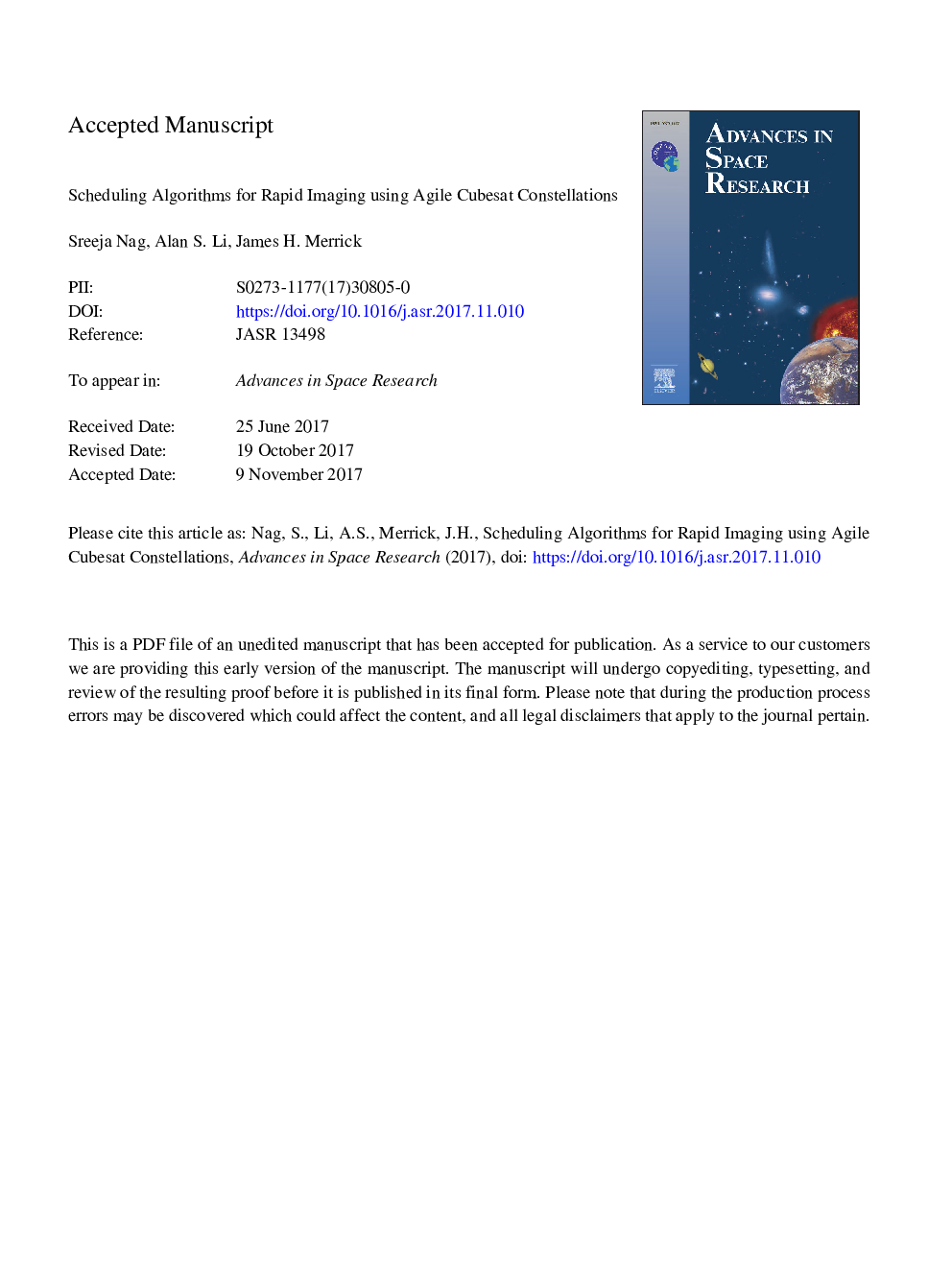| Article ID | Journal | Published Year | Pages | File Type |
|---|---|---|---|---|
| 8132280 | Advances in Space Research | 2018 | 36 Pages |
Abstract
Distributed Space Missions such as formation flight and constellations, are being recognized as important Earth Observation solutions to increase measurement samples over space and time. Cubesats are increasing in size (27U, â¼40â¯kg in development) with increasing capabilities to host imager payloads. Given the precise attitude control systems emerging in the commercial market, Cubesats now have the ability to slew and capture images within short notice. We propose a modular framework that combines orbital mechanics, attitude control and scheduling optimization to plan the time-varying, full-body orientation of agile Cubesats in a constellation such that they maximize the number of observed images and observation time, within the constraints of Cubesat hardware specifications. The attitude control strategy combines bang-bang and PD control, with constraints such as power consumption, response time, and stability factored into the optimality computations and a possible extension to PID control to account for disturbances. Schedule optimization is performed using dynamic programming with two levels of heuristics, verified and improved upon using mixed integer linear programming. The automated scheduler is expected to run on ground station resources and the resultant schedules uplinked to the satellites for execution, however it can be adapted for onboard scheduling, contingent on Cubesat hardware and software upgrades. The framework is generalizable over small steerable spacecraft, sensor specifications, imaging objectives and regions of interest, and is demonstrated using multiple 20â¯kg satellites in Low Earth Orbit for two case studies - rapid imaging of Landsat's land and coastal images and extended imaging of global, warm water coral reefs. The proposed algorithm captures up to 161% more Landsat images than nadir-pointing sensors with the same field of view, on a 2-satellite constellation over a 12-h simulation. Integer programming was able to verify that optimality of the dynamic programming solution for single satellites was within 10%, and find up to 5% more optimal solutions. The optimality gap for constellations was found to be 22% at worst, but the dynamic programming schedules were found at nearly four orders of magnitude better computational speed than integer programming. The algorithm can include cloud cover predictions, ground downlink windows or any other spatial, temporal or angular constraints into the orbital module and be integrated into planning tools for agile constellations.
Related Topics
Physical Sciences and Engineering
Earth and Planetary Sciences
Space and Planetary Science
Authors
Sreeja Nag, Alan S. Li, James H. Merrick,
